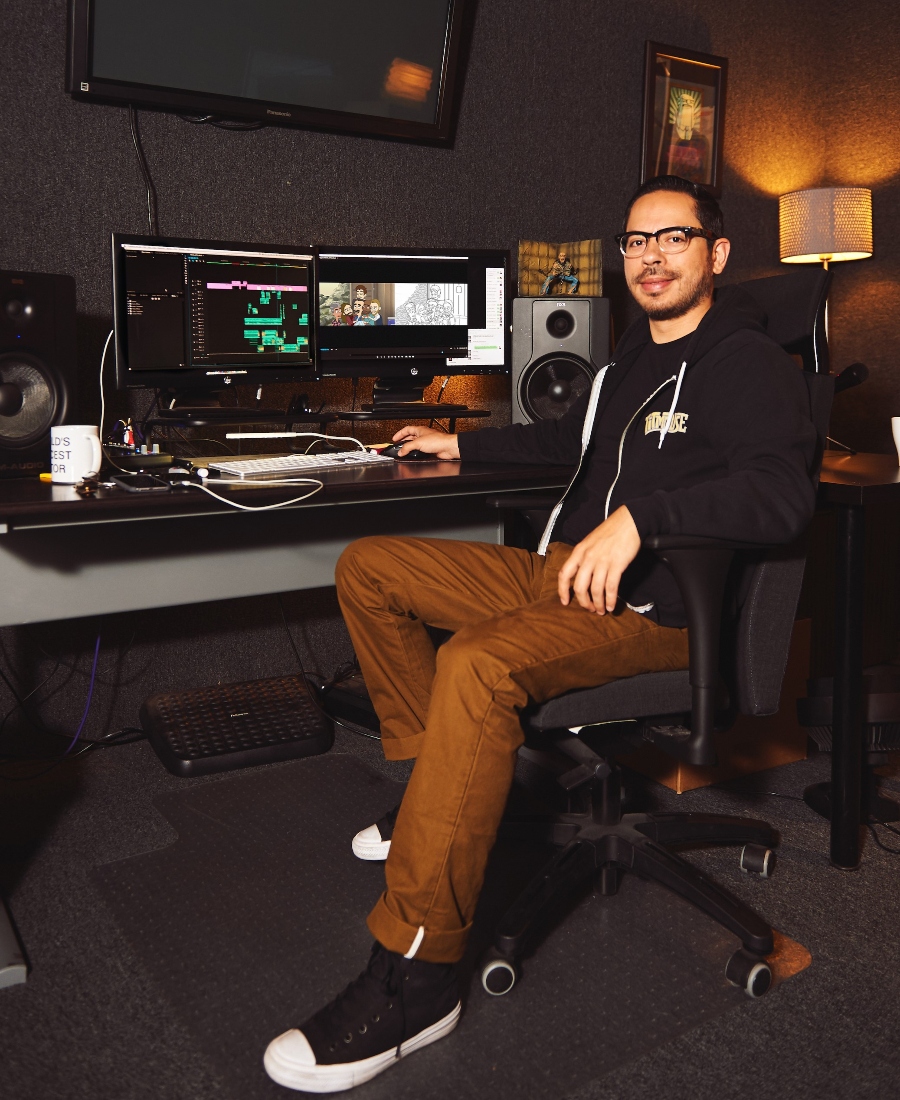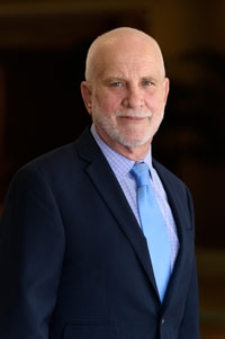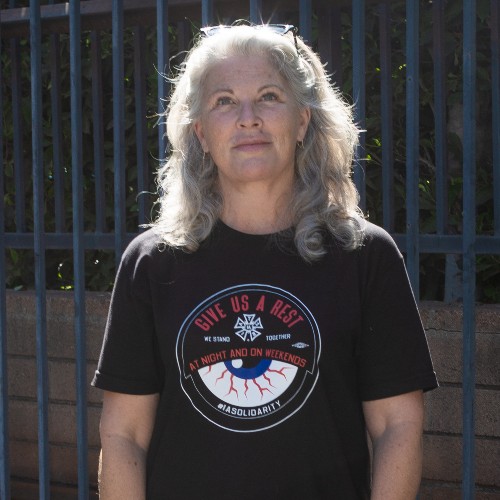
Human Resources, the newish animated series on Netflix, has pulled off the improbable trick of being one of the streamer’s current cartoon series that has managed to actually get… renewed.
A spinoff of its hit Nick Kroll series Big Mouth, which concerns perpetually horny teens growing up in and around Westchester County, Human Resources plays like a TV-MA version of Inside Out, picking up on Forbidden Planet’s line about “monsters from the id.”
As funny — or frisky — as these monsters might be.
Editor Felipe Salazar worked on both Big Mouth and Human Resources, and in talking to him about those two shows, we were also curious about what changes the Covid era (not that we’re “post-Covid” yet) brought to his workflow, and whether any of them look to be permanent or not.
“For the time being, we are still working remotely,” he told Below the Line, “so we are still in the pandemic workflow. I believe we will go back to the in-studio workflow, which is much easier on hard drive space” — a concern that lets you know we are definitely talking to someone in post-production, and that we are no longer cutting shows on flatbeds.
“At the studio, we have a large shared server which is much easier than using a remote one to connect to. I’m looking forward to that, as our delivery guidelines are changing to a much larger format,” explained Salazar. “We need that speed and drive space! Other than that, the apps will remain the same.” On the more practical side, he mentioned the use of Adobe Premiere Pro, noting they’ve already “tested these new delivery formats and they will work well with Premiere.”
The only question is when they’ll get access to all the extra memory to make that workflow truly flow again.

Editors, though, along with VFX teams and sound mixers, were also among those crew members easiest to isolate when that became a necessity, and doubtless, less prone to the kinds of catastrophic injuries more routinely faced by the camera, rigging, and stunt departments, even in non-pandemic times, which may be why Cine Gear’s recent panel about set safety was comprised entirely of Local 600 members.
We did indeed touch on that panel last week in our Cine Gear overview, but we wanted to come back to it specifically since it spoke to a lot of the issues that crews are facing, both with our ongoing collective viral follies, and the heightened awareness of set safety — and the degree to which it gets ignored — following the tragic death of Rust cinematographer Halyna Hutchins.
Local 600’s business rep Michael Chambliss moderated a conversation on “Establishing a Culture of On-Set Safety” that featured two other panelists — DP/director Patrick Cady, ASC, and 600’s Rebecca Rhine, the current though soon-to-be-exiting National Director of the local.
Among the many things we didn’t get to mention previously, Rhine wrapped up the panel by saying “if you took nothing else away — we can’t look at just one safety risk at a time.”
In other words, even when there’s a pandemic happening, or something as horrific as an accidental gun discharge, she mentioned that electrics, explosions, and car chases are generally — or at least, statistically — more dangerous to crew members.
Along these lines, they showed a clip that the 600 had created, aimed at getting a new AMPTP Safety Bulletin issued about on-set protocols, showing what happens to a camera operator in a car crash.
In other words, imagine the operator sitting in a seat to capture a drive-and-talk, or a car chase, holding their digital camera, and then something goes horribly wrong. In addition to the already wrenching mayhem of the crash, the video showed — from numerous angles — the camera plowing into the crash dummy’s head, or sometimes bouncing and hitting the operator a second time, in the mayhem of metal objects and unleashed kinetic energy.
The video, Chambliss noted, generated a bulletin “in record time.” Cady saw it, and as both a DP and director on Amazon’s Bosch series, said the video changed driving sequences on the show “seismically and immediately,” with remote heads replacing operators — which had the additional benefit of not having someone next to an unmasked actor during the height of on-set Covid protocols.

Rhine also ventured that she thought “legislation is the newest frontier” for implementing some long-sought safety protocols outside the strictures of the “imperfect art” of contract negotiation.
Though of course, given the impossibility of meaningful Federal legislation getting passed through the Senate for the foreseeable future, that means more will need to be done on a state-by-state basis, and it is similarly hard to imagine certain Southeastern production tax-rebate states, like Georgia, passing any kind of worker protections at all (whereas states like Florida and Texas now seem likelier to reinstate a local Hays Code to monitor the “sanctity levels” of scripts looking to be shot there).
In terms of state governments that could meaningfully address film and TV production, that basically leaves California and New York, but even in California, a law that seemed like a slam dunk — a bill to ban live ammo on sets — failed to make it out of the legislature, having stalled in committee.
And while Rhine said on the panel that the “basic premise” to take on such issues is that “the employer is responsible for everyone’s safety,” it wasn’t just owners or producers opposing the gun bills, but also The Alliance of Special Effects and Pyrotechnic Operators.
So whether these same legislatures — even the ostensibly friendly ones, in the midst of a seemingly endless U.S. culture war — can be relied on to address other issues, like the length of working hours, remains a very open question, to put it mildly.
Much then will get back to establishing that on-set culture, referenced in the panel’s title. Though as Cady noted, “safety can be a dull topic — until the fire breaks out.”
Or until the shot goes off.
Meanwhile, attendees were encouraged to download 600’s safety app, for their iPhone or Android, emphasizing one doesn’t have to be a member of 600, or even in the camera department, to use it.
You just have to be part of that culture of safety, and want everyone to get back home at night.
Which, given the culture wars in general, ain’t a bad side to be on.
 Mark London Williams is a BTL alum who currently covers Hollywood, its contents and discontents, in his recurring “Across the Pond” dispatch for British Cinematographer magazine, contributes to other showbiz and production-minded sites, and musters out the occasional zombie, pandemic-themed, or demon-tinged book and script, causing an increased blurring in terms of what still feels like “fiction.”
Mark London Williams is a BTL alum who currently covers Hollywood, its contents and discontents, in his recurring “Across the Pond” dispatch for British Cinematographer magazine, contributes to other showbiz and production-minded sites, and musters out the occasional zombie, pandemic-themed, or demon-tinged book and script, causing an increased blurring in terms of what still feels like “fiction.”
Mark London Williams’ Union Roundup column will appear every Tuesday. You can reach him to give him tips and feedback at [email protected]. He can also be found on Twitter @TricksterInk.





